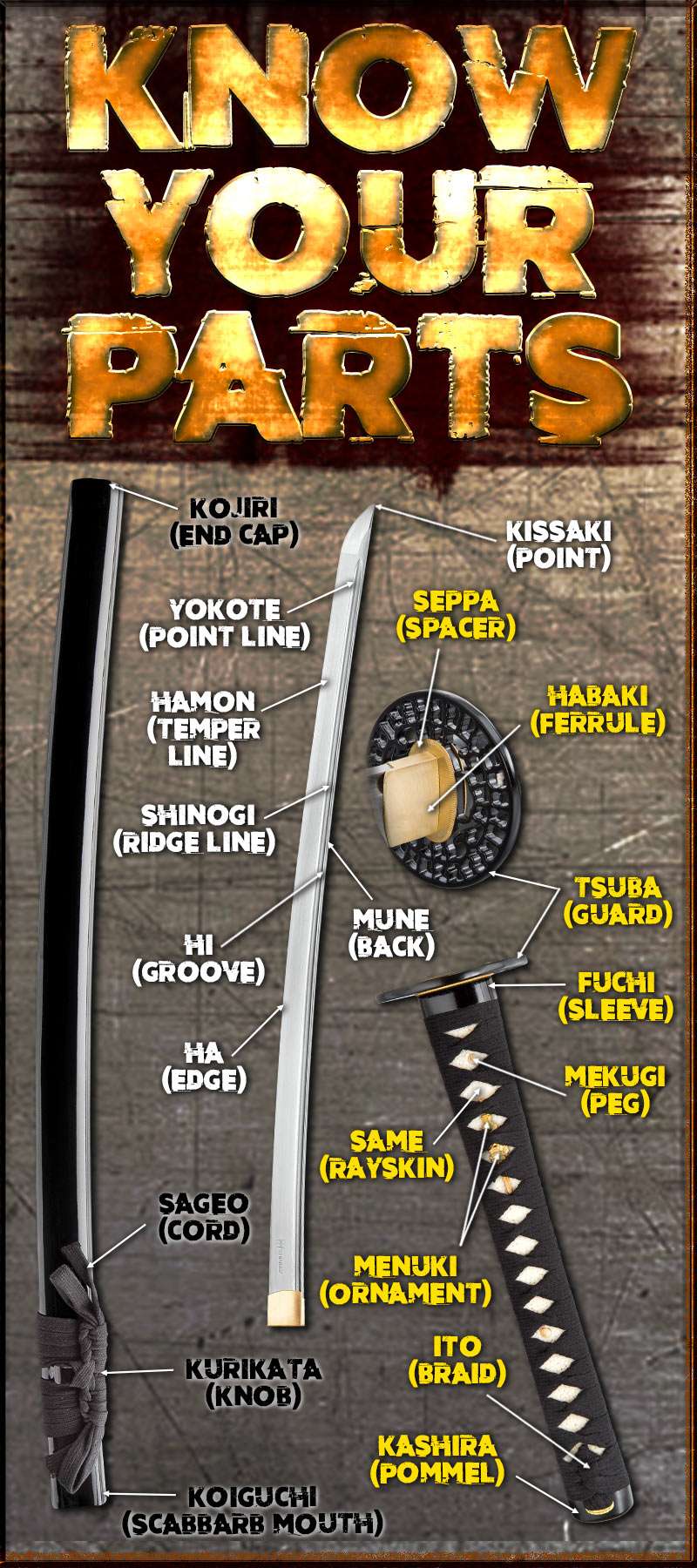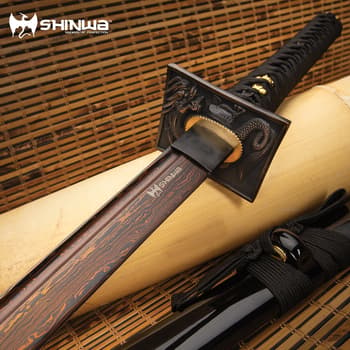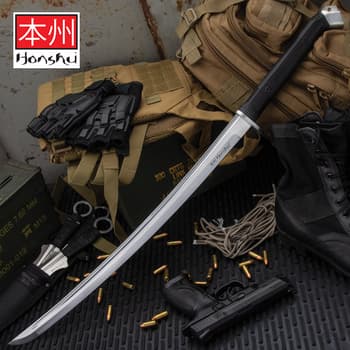Parts of a Sword (Everything You NEED To Know)
By Adelia Ladson
If you’re a first time katana buyer, you really should know the individual parts that make up the whole of the beautiful sword that you’ve purchased. Here are what they’re called in both Japanese and English and where they are. So, pick-up your katana and follow along!

So, starting from the outside, your katana is housed in a Saya (scabbard) and below are its parts:
- End Cap (Kojiri)
- Cord (Sageo)
- Knob (Kurikata)
- Scabbard Mouth (Koiguchi)
You pull your katana from its saya by the Tsuka (handle) and it is crafted of several components:
- Pommel (Kashira)
- Braid (Ito)
- Rayskin (Same)
- Ornament (Menuki)
- Peg (Mekugi)
- Sleeve (Fuchi)
- Guard (Tsuba)
- Spacer (Seppa)
- Ferrule (Habaki)
When you look down the Nagasa (length of the blade), you’ll see that it, too, is crafted with several components and is not just a flat piece of metal. What you won’t see is the Nakago (tang), which is what the handle is attached to. Starting from the tip:
- Point (Kissaki)
- Point Dividing Line (Yokote)
- Temper Line (Hamon)
- Ridge Line (Shinogi)
- Back (Mune)
- Groove (Hi)
- Edge (Ha)
If you’re a first time katana buyer, you really should know the individual parts that make up the whole of the beautiful sword that you’ve purchased. Here are what they’re call in both Japanese and English and where they are. So, pick-up your katana and follow along!
So, starting from the outside, your katana is housed in a Saya (scabbard) and below are its parts:
- End Cap (Kojiri)
- Cord (Sageo)
- Knob (Kurikata)
- Scabbard Mouth (Koiguchi)

You pull your katana from its saya by the Tsuka (handle) and it is crafted of several components:
- Pommel (Kashira)
- Braid (Ito)
- Rayskin (Same)
- Ornament (Menuki)
- Peg (Mekugi)
- Sleeve (Fuchi)
- Guard (Tsuba)
- Spacer (Seppa)
- Ferrule (Habaki)
When you look down the Nagasa (length of the blade), you’ll see that it, too, is crafted with several components and is not just a flat piece of metal. What you won’t see is the Nakago (tang), which is what the handle is attached to. Starting from the tip:
- Point (Kissaki)
- Point Dividing Line (Yokote)
- Temper Line (Hamon)
- Ridge Line (Shinogi)
- Back (Mune)
- Groove (Hi)
- Edge (Ha)
Related Products

























